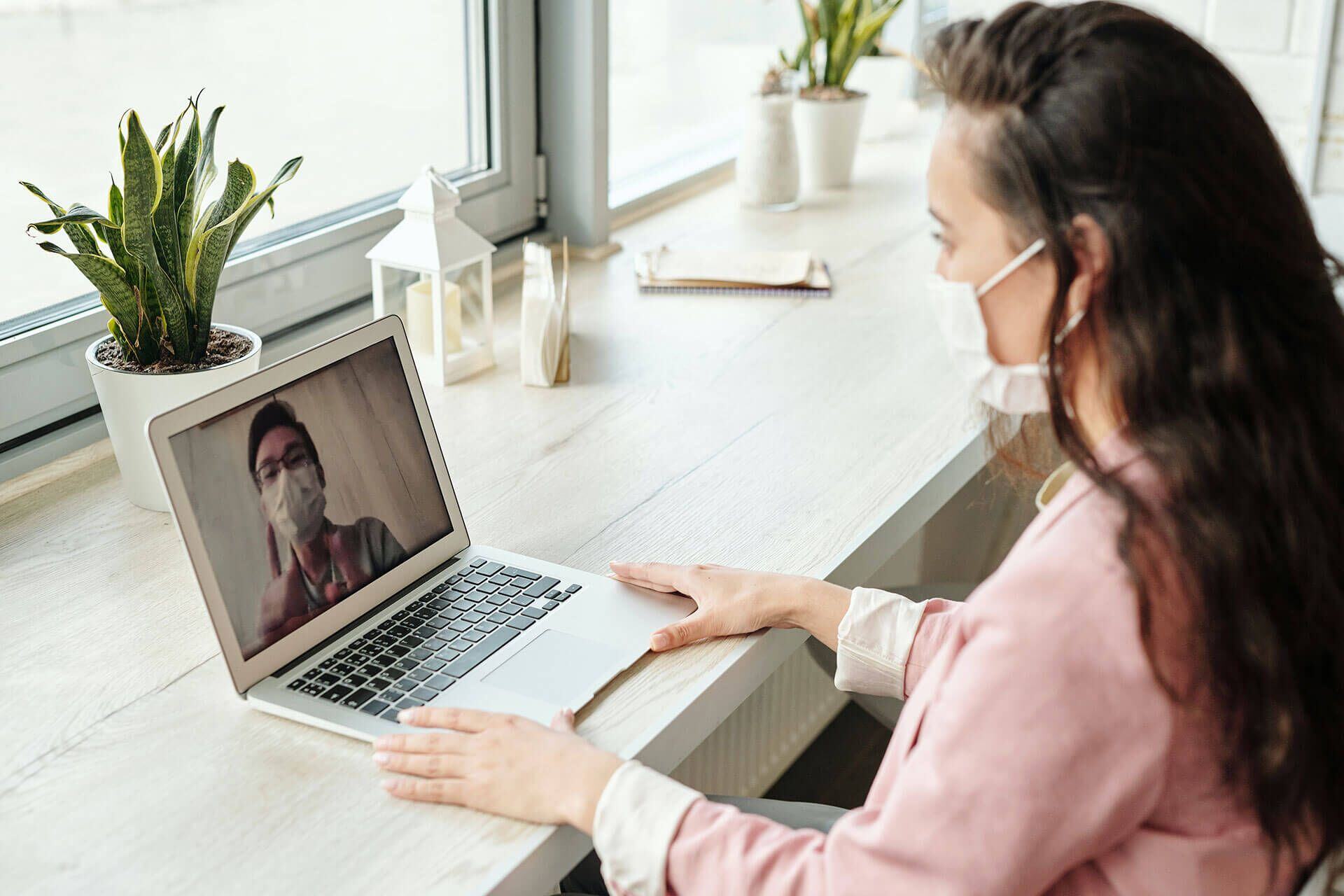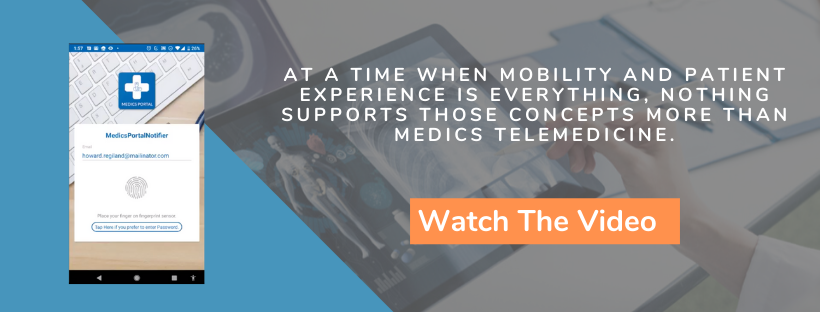How to Overcome Common Patient Concerns Toward Telehealth Apps
Telehealth is not a new concept: as far back as 1879, an article in The Lancet advocated the idea of utilizing the telephone to minimize the number of unnecessary office visits.
In 1925, it was promoted yet again by the magazine Science and Invention, when it showed a physician diagnosing their patient via the radio on the magazine cover.
However, thanks to the recent advancements in information technology and the rise of industry 4.0, telehealth has gone far beyond what anyone could have possibly imagined a century ago.
Today, doctors can engage with their patients via video chat, monitor them remotely with the use of IoT, and have all of their medical records available at the click of a button. Moreover, thanks to COVID-19 and the ensuing lockdown, the adoption of telehealth solutions has skyrocketed.
In fact, it is estimated that 2020 will see more than 1 billion virtual healthcare interactions. March of 2020 alone saw telehealth visits increase by 50 percent.
What Is the Current State of Telehealth
According to a survey by Software Advice, there is already significant interest from patients regarding telehealth.
In fact, almost three out of every four respondents indicated an interest in telemedicine, which is a subset of telehealth.
This interest should come as no surprise since patients who had used telemedicine cited numerous benefits:
- High quality of care: comparable, if not better than in-person visits.
- Eliminating the need for travel and the ability to see a physician in the comfort of their own home.
- Ease of access to a physician, and the ability to avoid a waiting room.
- Lower costs.
Rural patients, especially those without easy access to efficient modes of transportation, found it very beneficial that telemedicine spared them the need to arrange for transportation to and from their appointment.
This is why telemedicine has proven more popular in rural hospitals than in urban or suburban ones.
However, like with any new technology, some patients have reservations concerning telehealth solutions and prefer having an in-person medical experience.
The Concerns Surrounding Telehealth
We can group most concerns into one of two categories, those regarding the quality of the treatment and those related to technology used in the procedures.
These reservations might slow down the rate of telehealth adoption, which is why healthcare providers need to address them to facilitate its boom.
Quality of the Medical Treatment
The notion that receiving virtual consultations will fail to entail the same quality of care as receiving in-person treatment is perhaps the most common.
For many patients, a significant component of a medical consultation is the in-person interaction and the relationship built with the physician.
This should come as no surprise, as effective communication between patients and their physicians has been shown to have a positive influence on health outcomes.
What is more, it increases patient satisfaction and involvement in their treatment and provides patients with much-needed support and reassurance during difficult times.
Consequently, many patients are concerned that these benefits may diminish, if not get lost entirely when switching from in-person to virtual consultations.
Another concern centers around the physician’s ability to detect symptoms.
The rationale goes that since virtual sessions impede doctors from performing physical exams and fully observing the patients’ body language, physicians operating virtually might miss symptoms that they would have otherwise detected.
We will address these concerns later in the article after we go over those related to technology.
Technology Used
The patients’ misgivings often revolve around the technology needed to deliver high-quality telehealth services.
For starters, patients are concerned that faulty technology or software bugs might adversely affect the quality of the service being offered. After all, it would be an unsettling experience to lose internet connectivity, just as the doctor was about to deliver vital test results.
Another issue revolves around how comfortable the patients are with using the necessary technology.
For example, some patients might be uncomfortable using video chat, while others might not even be tech-savvy enough to operate the technology in the first place.
Additionally, at the exponential rate with which technology evolves, it is fair to assume that many elderly patients will lack the necessary skills.
None of this is to mention the security concerns several patients have.
They might worry over how safe their personal data is and how private their sessions really are. And, these concerns may seem well-founded when you consider the number of data leaks we hear about every so often.
Since these data leaks occur to large, reputable corporations that were supposed to be impenetrable, it is understandable that individual users worry about them too.
Addressing These Concerns
When it comes to answering the question of how do virtual consultations stack up against in-person care, the number one tool that healthcare providers need to look into is education.
Telehealth is effective when it is done correctly. So, where does education start?
Concerns Related to Quality of Care
Patients should be made aware of the main telehealth technologies as well as the main types of telehealth. There are synchronous telehealth, asynchronous telehealth, and remote monitoring. Each type has benefits that suit specific occasions, and it is important to know when to use them.
Explaining the Advantages of Different Types of Telehealth
For instance, while synchronous telehealth is ideal for check-ups and consultations, asynchronous telehealth can be helpful when patients want to pose quick questions to their doctors.
And, not only can remote monitoring overcome many of the limitations presented by synchronous telehealth, but it can also prove to be an ideal solution to monitor individuals with chronic illnesses, such as diabetes and heart conditions.
As a matter of fact, research has indicated that remote monitoring can be as effective, if not more so, as real-life care when it comes to chronic conditions.
There are situations where it might be better to receive in-person care. Telehealth has the added benefit of providing the ability to identify such situations.
For example, if a patient falls off a ladder and hurts their arm, they can conduct an initial session with a healthcare provider via video chat.
From that initial session, the patient can either be informed that there is nothing wrong with their arm and all they need is rest, or there might be some injury that will require further tests, such as an x-ray, to be identified.
This will save the patients both time and money.
And, it goes without saying that any life-threatening injury must be rushed to the hospital without delay.
Dispelling Misconceptions About Telehealth
Another important component of educating patients should include dispelling common myths associated with telehealth.
For example, assumptions such as those about telehealth sessions being cold and impersonal compared to in-person ones are unfounded, and they have been shown to be the opposite of what actually happens.
Nevertheless, education shouldn’t be limited to patients; physicians should also learn the best practices to keep the patients engaged and do everything they can to provide patients with a welcoming virtual care environment.
This means using cameras appropriate for telehealth, lighting that seems natural, and clinic aesthetics that are conducive to a medical consultation.
Concerns Related to Technology
The issues concerning technology are a bit trickier to resolve. One obvious factor to take into consideration is that, as time moves on, people will increasingly become comfortable with technology in general, so using it in telehealth will become effortless.
That said, there are a number of things healthcare providers and doctors can do today to help address these issues.
Before anything, it is necessary to identify the things that healthcare providers can control and the things they can’t.
Factors Beyond the Control of Medical Providers (and What to Do About Them)
Medical providers will, naturally, have little control over the technical preconditions and knowledge of their patients.
However, just because something is outside of their control doesn’t mean that there is nothing to be done about it at all.
For instance, while healthcare providers can’t control their patients’ internet connectivity or their electric power, they can let the patients know what are the minimal technical requirements for a successful virtual session.
This will entice the patients to acquire access to the necessary technology and familiarize themselves with it ahead of time.
Factors Within the Purview of Medical Providers
On the other hand, a substantial number of factors is under the control of hospitals and doctors.
To begin with, they should choose the best technological platforms that are both user-friendly and reliable.
Moreover, if push comes to shove, healthcare providers should be prepared to develop their own apps.
Not only will an app come in handy when it comes to making reservations and payments, but it can also be an excellent tool to centralize the patients’ data and ensure care continuity.
This can be an ideal solution seeing as one of the biggest technological issues facing telehealth is a lack of integration between Electronic Healthcare Records and technological platforms used to provide medical services.
Factors Related to Security
As for privacy and security concerns, it is the providers’ responsibility to offer their patients assurances, starting by ensuring that their platforms are HIPAA-compliant.
This means that all data shared between the physician and their patients is encrypted and that the network connections are secured. Furthermore, doctors should always ask for their patients’ consent before recording and storing video calls.
Concerning the storage of patient data, which is also known as electronic Protected Health Information, medical providers need to do everything in their power to keep it secure from breaches.
This includes making sure that the data is only accessible to authorized individuals and that every caretaker accessing the data is following the correct protocol, including using a secured network.
The Future of Telehealth
What will happen to telehealth once the pandemic is over is still up in the air. While most people agree that telehealth is here to stay, it is still not clear whether it will continue the meteoric rise that was instigated by the need for social distancing.
Nevertheless, if there’s one thing the pandemic has proven, it is that telehealth can be successful and beneficial for both the physician and the patient.
The question now is, how do we take something that was supposed to be a band-aid solution for a dire situation and turn it into a permanent staple of our healthcare system? Time will tell.
Telehealth Apps for Your Practice
Now that you have a better idea of how to overcome some common patient concerns regarding telehealth apps, you may be ready for some more details about telehealth systems. To learn more about telehealth software, check out our free telehealth demo.
About Heather Redding
Heather Redding is a content manager for rent, hailing from Aurora. She loves to geek out writing about wearables, IoT and other hot tech trends. When she finds the time to detach from her keyboard, she enjoys her Kindle library and a hot coffee. Reach out to her on Twitter.



